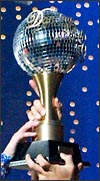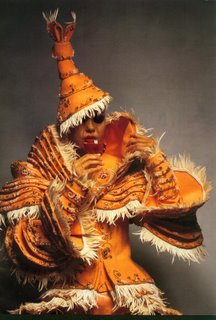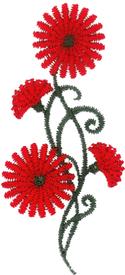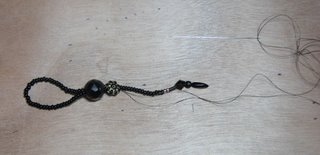I love all types of embellishment - embroidery (hand and machine - yes I like machine embroidery), beading, lace, trim, ribbons, tassels, buttons - you name it. But I must be honest, when it comes to embellishment, I have pretty strong opinions about what works and what doesn't. For the most part 99.9% of what I see as embellishment and/or "art-to-wear" is absolute dreck, and with the exception of a few well-documented historical needlework forms, such as samplers and stumpwork, nothing makes me cringe more than kitschy hand embroidery framed and hung on a wall as Art with a capital "A".
For me, embellishment and needlework is meant for clothing and useful household objects. Coco Chanel once said that the garment always comes first, then the embellishment, and I agree.
So I'll show you how I approach embellishment from this perspective. Over the years, I've seen
plenty of bad embellishment on sewing blogs and web sites, but I'll use two of my own projects as examples because we can can rip them to shreds and no feelings will be hurt. Both of these projects used exactly the same embellishment technique, and virtually the same color palette, beads and materials, but I think you'll agree that one works, and one doesn't. Here's why:
Rule 1: The Pattern Comes First
Plopping an embellishment technique onto a project, that is, just using the garment as a blank canvas, really never works, and that's the main problem with this jacket:

This is a Kenneth King technique that had I wanted to try for quite some time, and I actually made that decision prior to deciding what pattern to use. Big mistake. Consequently, this Marcy Tilton pattern (Vogue 7907) is totally unsuitable because I discovered the beading is so heavy that it weighs more than the very unstructured jacket, and the quasi-Asian design of the style has no relationship to the organic, elaborate beading. The overall effect? Weird.

However, on the second attempt at this technique, I used a pattern that, by design, has a built in "canvas" - a front placket. This is Simplicity 4142 and even though the knit I used is very lightweight, the centered aspect of the placket could still accept the heavy wool felt backing needed for all of this beading and rattail cord.
Also, from a design perspective, this embellishment makes sense because the design of the pattern provides a proper showcase for the technique. This is exactly the problem with the beading on the lapels of the Vogue jacket - the embellishment just sits there, on it's own, and it has no design relationship to any feature of the jacket, even though the color palette is in the correct range.
So the lesson here is to really look at your intended embellishment, and see if it relates in a logical way to the rest of the garment, as opposed to just "sitting there." I posted a tutorial on the making of this placket a while back, and you go here for
Part I, and here for
Part II.
In a future post I'll cover machine embroidery designs, which have been getting a bad rap lately, and I'll share with you how I evaluate a design before I use it.














